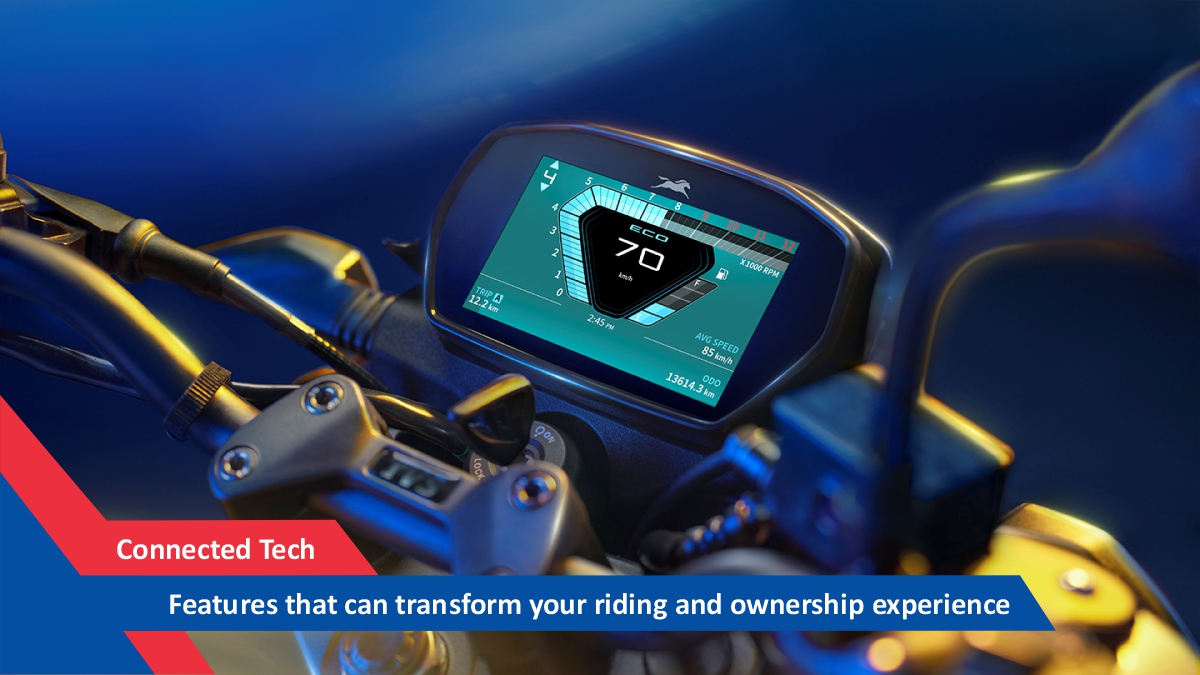Technology has transformed the way we live, work, and travel. From ordering food with the tap of a button, to calling for a cab with real-time GPS data, there is an app for everything. The two-wheeler industry has always been driven by technology, with the latest buzzword within the ecosystem being connected tech. Thanks to this transformation, two-wheelers have become much more sophisticated and comes with an app of its own. Connected tech has enhanced the overall riding and ownership experience for riders. How, you ask? Read along to find out.
Navigation
One might argue that every Apple and Android phone has the capability to run a navigation app and you don’t probably need a separate sat-nav system. That might be right, but using the phone as a navigation device means you need to spend extra on an external mount to place the phone on. The angle and position of the point where the phone is mounted could be distracting for riders and might even be prohibited by law. Also, not all scooter and motorcycle handlebars are suitable to install a smartphone mount. Then there’s also the risk of the phone falling off the mount when riding at high speeds.
All these challenges inspired two-wheeler makers to have cell phone-connected, or independent navigation systems built right into the instrument consoles of their products. One can now easily navigate through uncharted territories thanks to the integration of navigation systems with the on-board screens. Turn-by-turn directions, real-time traffic updates, and points of interest can all be found using such a system. These systems can also direct riders to nearby gas stations, eateries, and lodging facilities. Some advanced two-wheelers also come with a feature wherein you can connect your vehicle’s instrument console with the smartphone and a Bluetooth headset for audio enabled turn by turn navigation. This allows for convenient, distraction free and even safer use of navigation while riding.
Bluetooth
We have been using Bluetooth for decades now. It is one of the most reliable forms of connectivity between devices in a short range. A host of information can be transferred from one device to the other using Bluetooth. Bluetooth functionality can enable you to connect your phone to your two-wheeler with a few simple screen taps. Turn on call notifications and you can see who’s calling you right on the two-wheeler’s display. Some advanced systems also allow connection to the helmet audio system. This enables the rider to accept or reject calls using the buttons on the vehicle itself. You can also set up auto-response texts to callers, letting them know that you are riding when you reject calls. Along with prompts for messages, some systems also allow multi-app notifications. Bluetooth also enables music controls. So, if you are listening to music, you can see what songs are playing currently.
Telematics
A modern telematics system helps monitor hundreds of parameters on a two-wheeler actively as it is used. In-short, it transfers data about the vehicle to the rider, and if the user allows it, to the manufacturer as well for debugging and product improvement purposes. With the help of connected tech and telematics, users can monitor the performance of their vehicle, analyse their own riding behaviour, fuel consumption, and other vital data. Telematics can help detect an issue with two-wheeler’s parts or systems not functioning properly at an early stage, reducing the chances of a surprise breakdown drastically. All this data can be viewed in real-time by the riders with the companion application.
Some advanced two-wheelers track riding styles and behaviour of the riders and award points to the riders to gamify the whole experience. Riders can also compare their scores with fellow users.
Safety & Security
Connected systems in some cases come equipped with integrated SIM cards and GPS systems. These systems do not rely on cell phone data and have their own data plan, allowing the two-wheeler to stay always connected with the internet. This enables the users to utilise features such as geo-fencing, vehicle tracking, remote engine kill, etc. This actively protects the vehicle from theft, while also allowing the owners to track the vehicle’s movement precisely and avoid any kind of possible misuse.
Over-The Air Updates
Two-wheelers are getting advanced. To keep up with this technological advancement, OEMs need to ensure that their products are up to date with the latest software. Gone are the days when you would have to take your vehicle to the workshop for a software flash. With connected tech and an integrated SIM card, OEMs can simply push the software updates to the vehicle over the air. The users can then download the update and install it at their own convenience.
Connected technology is transforming user experience, making two-wheelers easier, more convenient and safer to use. The scope of using connected tech, which is hooked to the product’s data on one end, and to the internet on the other presents endless possibilities. Most modern two-wheeler makers are using this opportunity to offer a sophisticated experience to their customers. As technology advances, the applications of connected tech are bound to change the way we use our two-wheelers in even more wonderful ways. So, when you buy your next two-wheeler, ensure that it comes equipped with this modern technology.




Comments (10)
katana
26 Apr 2023
katana
26 Apr 2023
katana
02 May 2023
katana
02 May 2023
Test amit
20 Jul 2023
hi there...
JOHN TOMMY DELOS REYES
22 May 2024
lost gps
Dhruv
08 Sep 2024
9685211459
BANLUMLANG WAHLANG
28 Mar 2025
GPS
Nitish Kumar
17 Jul 2025
Hey
Sadique Alam
22 Sep 2025
No comments